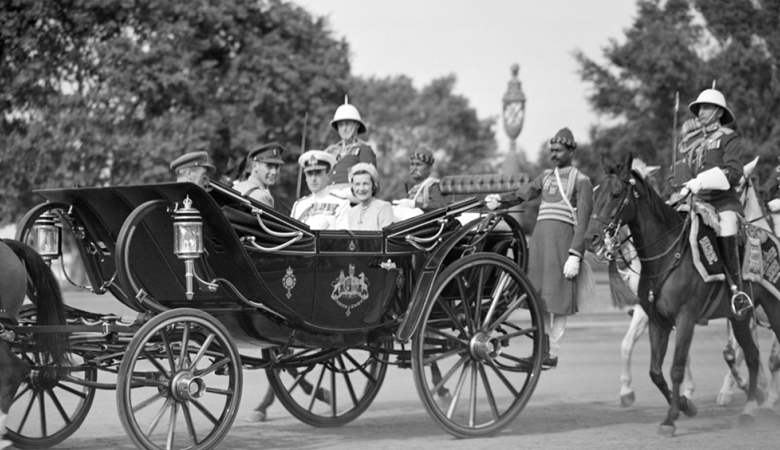How the British stole 45 million dollars from India

News Mania / Piyal Chatterjee / 18th October 2024
Through the trade system, it took place. Before the colonial era, Britain purchased commodities from Indian producers, like as rice and textiles, and paid for them in the same manner as any other nation, primarily with silver. Shortly after the East India Company seized power on the subcontinent and monopolized Indian trade, however, something happened in 1765. This is how it operated. After starting to collect taxes in India, the East India Company ingeniously used a third or so of the money it made to finance the acquisition of Indian commodities for British use. In other words, British businessmen obtained Indian goods for free rather than paying for them out of their own pockets, “buying” from peasants and weavers with funds that had
It was a massive theft and a swindle. However, because the person who came to buy their items was not the same as the one who collected the taxes, the majority of Indians were ignorant of what was happening. They would have undoubtedly detected a rat if it had been the same individual. A portion of the pilfered products were used in Britain, while the remainder were sold to other countries. Britain was able to fund a stream of imports from Europe through the re-export system, including vital resources for its industrialization, such as lumber, tar, and iron. In fact, this systematic plunder from India was a major factor in the Industrial Revolution.
Furthermore, the British were able to profit from the markup in addition to keeping 100% of the original worth of the stolen items by selling them to other nations for significantly more than they had originally “bought” them for. The colonists gave the tax-and-buy system a unique new twist after the British Raj assumed power in 1847. Indian manufacturers were permitted to export their products directly to other nations when the East India Company’s monopoly disintegrated. Nevertheless, Britain ensured that London received the money paid for those commodities.
Essentially, special Council Bills, a special type of paper money issued exclusively by the British Crown, were used by anyone wishing to purchase goods from India. And those bills could only be obtained by purchasing them from London with gold or silver. In order to obtain the bills, traders would pay London in gold. They would then use the bills to reimburse Indian manufacturers. Indians were “paid” in rupees when they cashed the bills in at the local colonial office using tax monies, which had just been gathered from them. Thus, once more, they were scammed and not paid at all.
In the meantime, all of the gold and silver that ought to have been given to the Indians in return for their exports ended up in London. Due to this corrupt system, India’s impressive trade surplus with the rest of the world—which lasted for three decades in the early 20th century—appeared as a deficit in the country’s accounts even though the actual revenue from its exports was completely embezzled by Britain.
This fictitious “deficit” is cited by some as proof that India was a liability to Britain. However, the exact opposite is true. Large amounts of money that rightfully belonged to Indian producers were seized by Britain. The bird that laid the golden egg was India. In the meantime, India was forced to borrow money from Britain in order to pay for its imports due to the “deficit.” In order to further solidify British rule, the entire Indian population was compelled to incur needless debt to their colonial conquerors.
Britain used the windfall from this fraudulent system to fuel the engines of imperial violence – funding the invasion of China in the 1840s and the suppression of the Indian Rebellion in 1857. And this was on top of what the Crown took directly from Indian taxpayers to pay for its wars. As Patnaik points out, “the cost of all Britain’s wars of conquest outside Indian borders were charged always wholly or mainly to Indian revenues.”
Britain funded the spread of capitalism in Europe and areas where Europeans had settled, such as Canada and Australia, by using this flow of tribute from India. Extraction from the colonies thus aided not just the industrialization of Britain but also that of a large portion of the Western world. From 1765 to 1938, Patnaik distinguishes four different economic periods in colonial India. He then computes the extraction for each of these periods and compounds from the middle of each period to the present at a small rate of interest (about 5%, which is less than the market rate). She calculates that the entire drain comes to $44.6 trillion. She claims that this number is conservative and excludes the debts imposed by Britain.
What does Britain need to do now to meet this? An expression of regret? Of course. Compensation? Maybe, even though there isn’t enough money in Britain to pay for the amounts Patnaik mentions. We can begin by correcting the story in the interim. We must acknowledge that Britain maintained its hold on India for the purpose of plunder, not out of altruism, and that, contrary to what our textbooks would have us believe, Britain’s industrial rise was based on violent piracy from other peoples and places rather than the steam engine and robust institutions.






